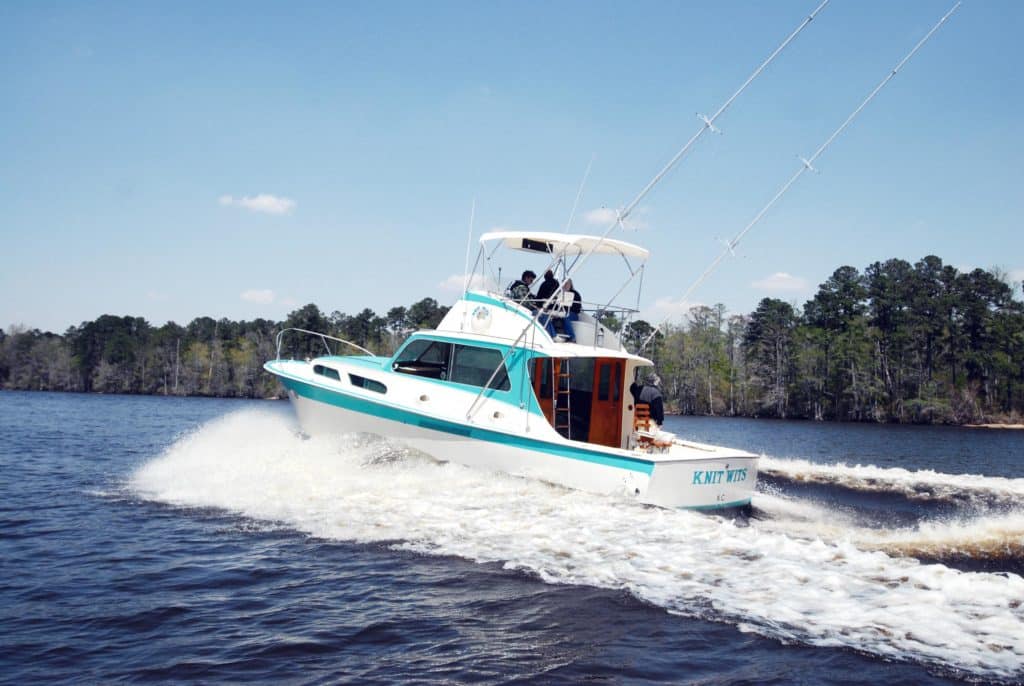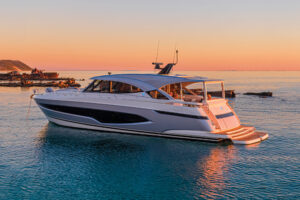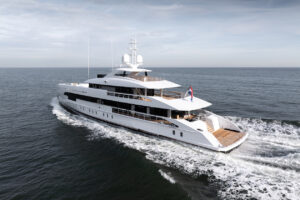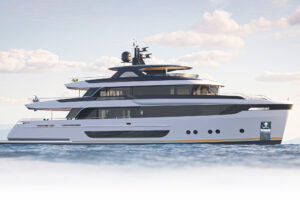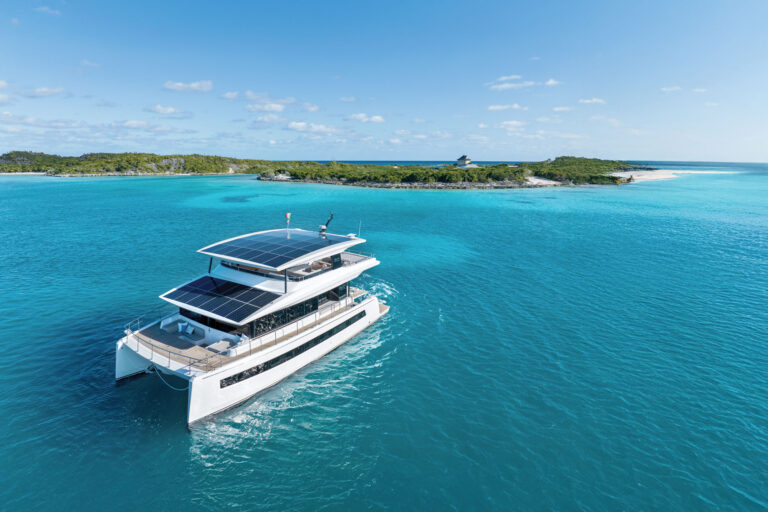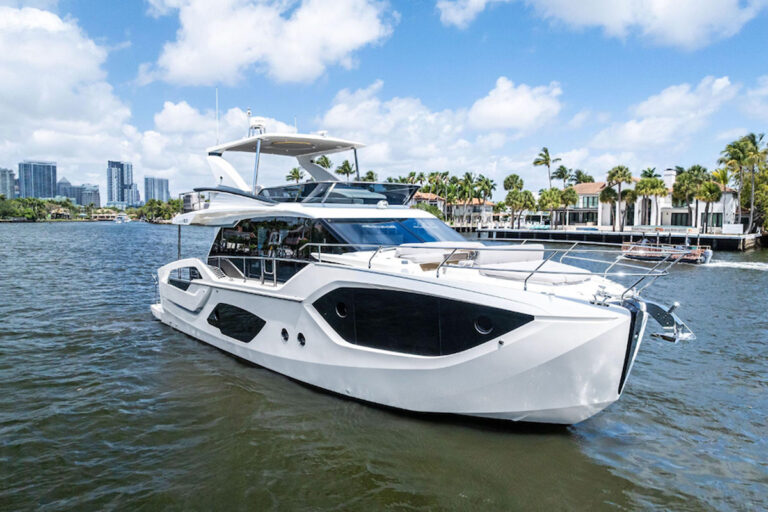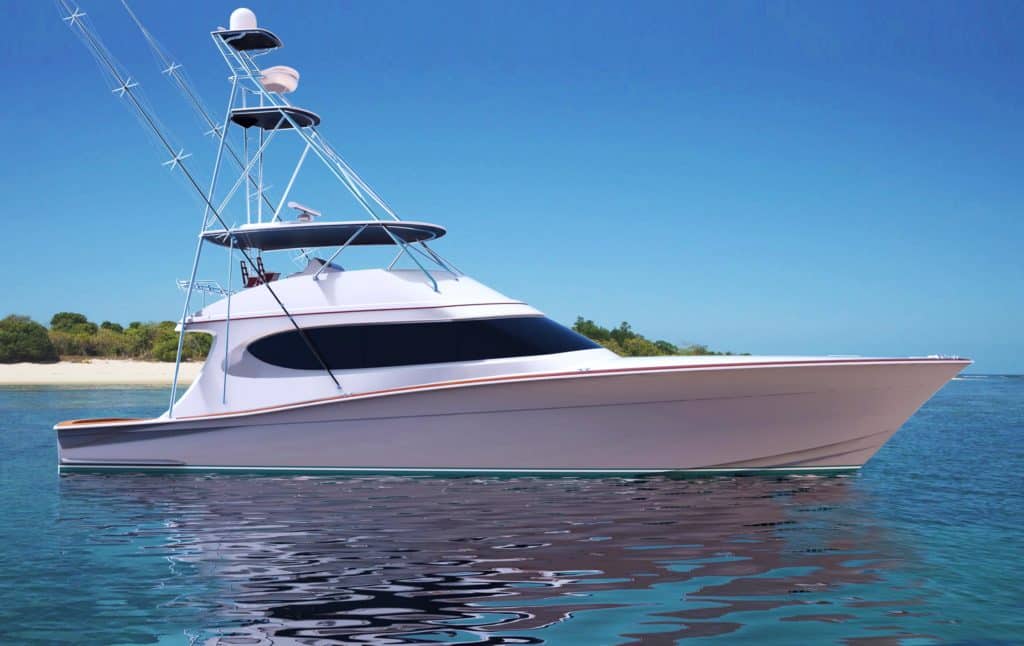
I first came across Hatteras Yachts’ GT convertible series in the Bahamas during the spring of 2007. A 35-knot wind was blowing offshore of Marsh Harbour’s Abaco Beach Resort, but my 1,800-horsepower Caterpillar-equipped GT60 test boat sprinted across a frothy-white sea at about a 36-knot cruise speed, and she topped out at 42 knots.
I thought at the time, “Wow!” Her fine entry, noticeable bow flare and convex, variable-deadrise hull form beat back the angry ocean, while the resin-infused construction felt solid underfoot. The GT60’s performance was rivaled only by her sinewy, porpoiselike profile and massive, made-for-fishing cockpit. She was an instant hit with serious sport fishermen.
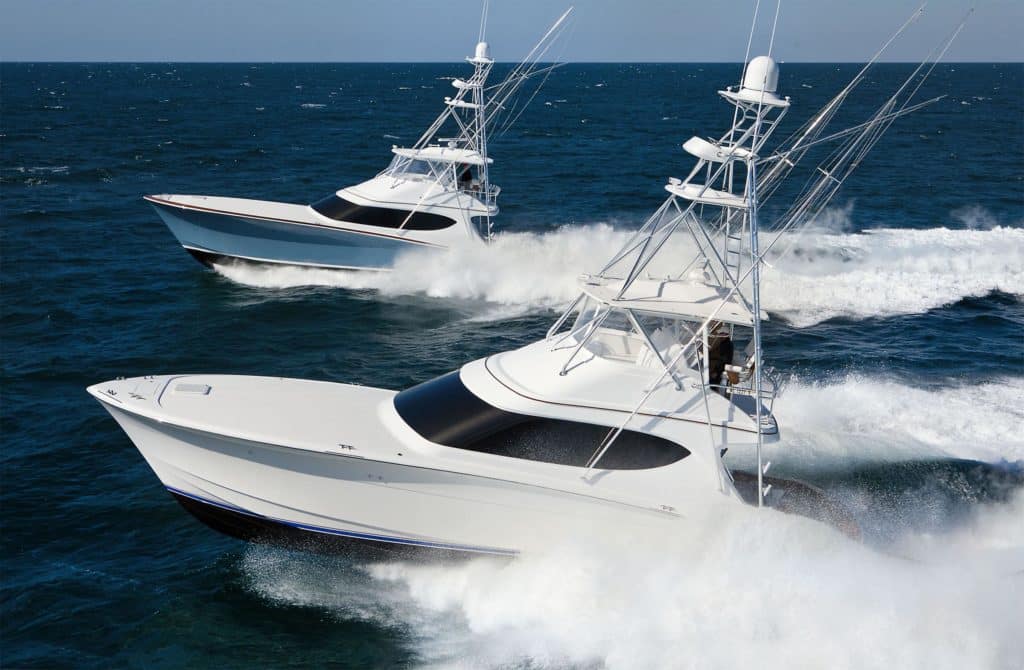
hatteras gt63 and gt54.jpg
Over the next three years, I had the opportunity to run a redesigned (mezzanine and interior) GT60 with 1,900-horsepower Caterpillar diesels and a slightly larger GT63 (also with 1,900-horsepower Cats). On both occasions, these two GT models offered the same inspiring performance, blue-water muscle and big-game fishability as the original 60. There’s also a smaller sister, the GT54, which has been equally popular and is a relatively midsize fishing machine.
All of the GT boats have earned a loyal following among offshore-fishing fans, so what’s a builder to do next? If you’re Hatteras Yachts, you take all that has been gleaned from the earlier iterations of GTs and create the largest, most formidable fishing machine of the series yet, a GT70. It’s coming, and I can’t wait. But how do you significantly increase the size of the craft and maintain the top-notch performance trademark that has made these models so celebrated?
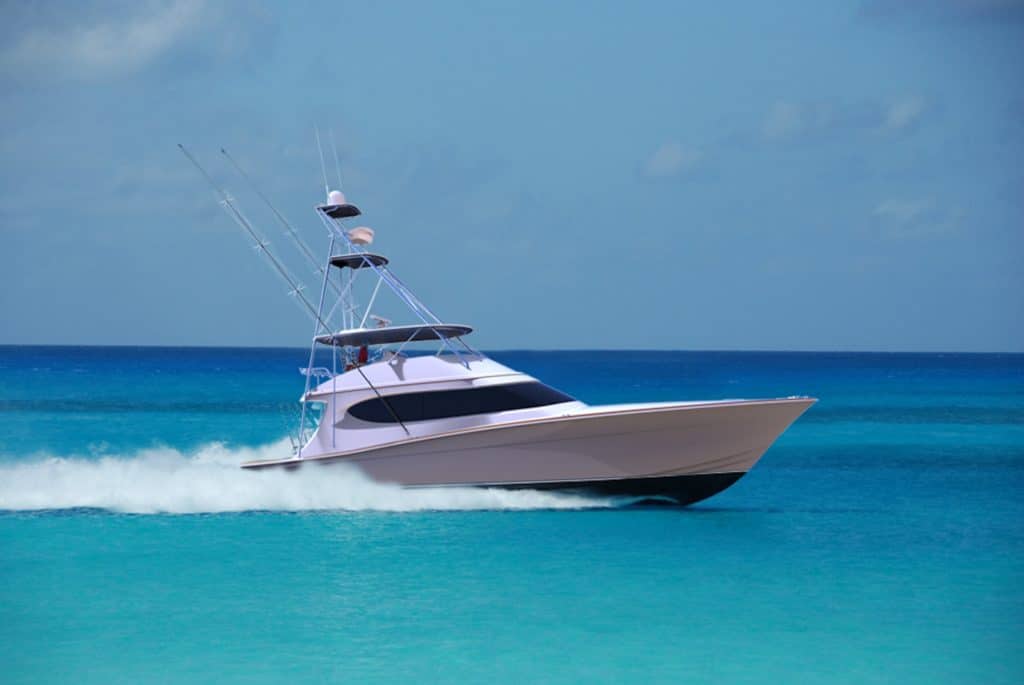
gt70_running.jpg
You start with bigger engines. The GT70 will feature a twin 2,600-horsepower MTU 16V 2000 diesel option, and that big iron should help this blue-water beast hit near 42 knots like her siblings. (Standard 1,900-horsepower Cats are predicted to scoot the 70 along at a respectable 35-plus knots.) To get the required thrust, the GT70’s transmission will sport a deep gear reduction, and five-blade wheels set into prop tunnels will reduce the boat’s draft and shaft angle.
Adding more horsepower means increased displacement, so overall heft reduction and internal weight placement is key to nailing the boat’s longitudinal center of gravity and hitting a performance bull’s-eye. To ensure that result, Hull No. 1 is being weighed at each station down the production line to keep the boat at the builder’s 120,000-pound displacement benchmark. By comparison, a late-model Hatteras 68 convertible comes in around 126,500 pounds.
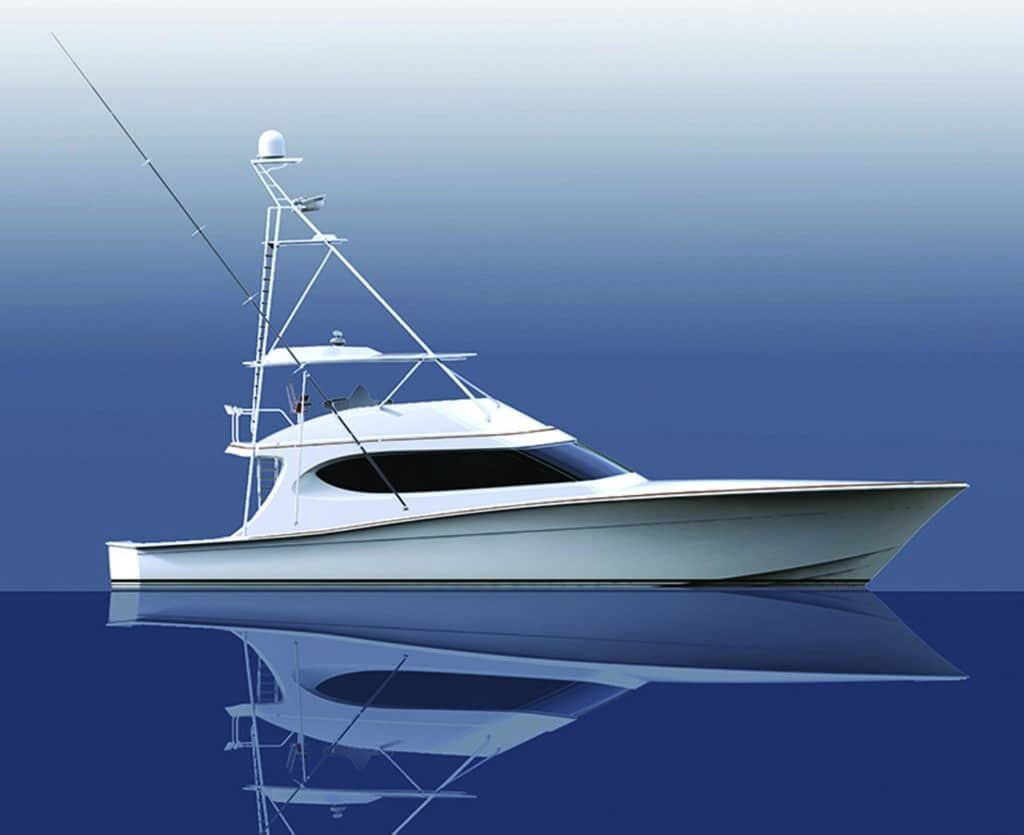
hatteras gt70- 10-16-13r2 (3).jpg
Building the GT70 via resin infusion aids in weight reduction by optimizing the fiberglass-to-resin ratio. The ratio with vacuum infusion is about 60:40, whereas it would be reversed in a hand-laid application. And even with these stringent weight requirements, Hatteras hangs its hat on the fact that it builds all of its vessels with solid-fiberglass bottoms. Some builders in this genre are using a fully cored hull to remove weight and enhance performance. (Both construction methods, when employed properly, are effective ones.) Fuel tankage is another important area of weight savings (and balance).
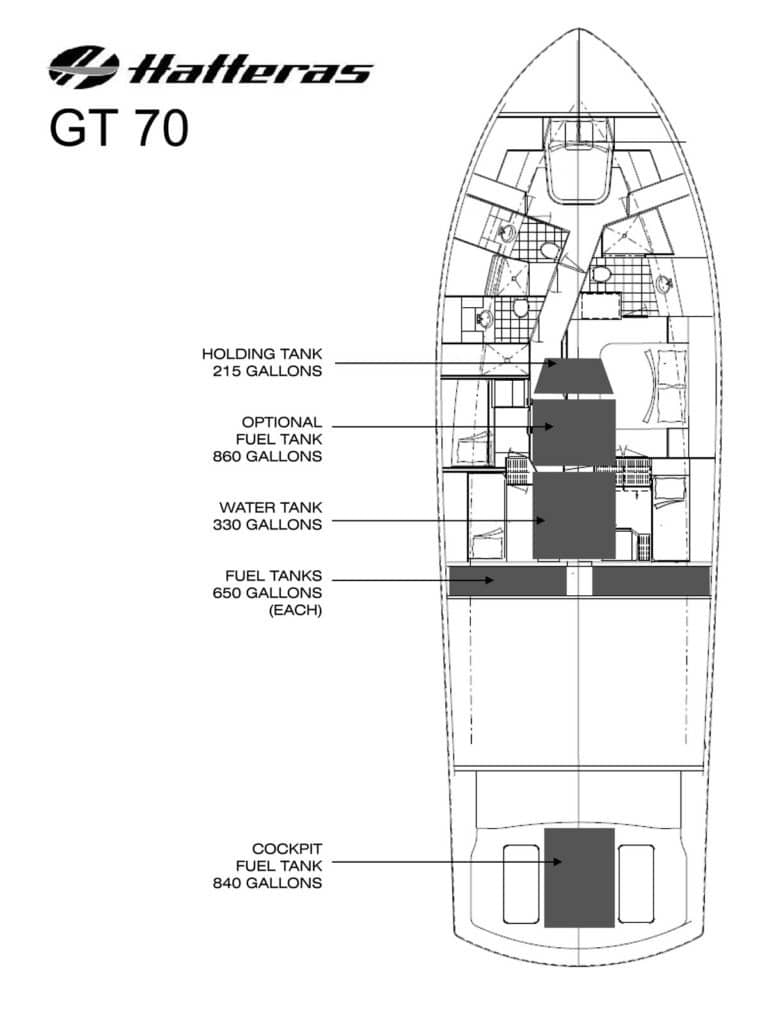
gt 70 tankager2.jpg
When Hatteras created the original GT60, there were several fuel tanks and fuel-transfer pumps that added gear, systems and bulk. The setup worked fine, but this builder found a better way with larger and fewer integral fuel tanks. T
o get the balance right on the GT70, 1,300 gallons of fuel will be in two 650-gallon main tanks positioned athwartships just forward of the engine room. An additional 840 gallons is available in a third tank on centerline under the cockpit, leaving plenty of room for bigeye-tuna-size, in-deck fish boxes. (The builder’s previous 68 convertible had five fuel tanks.) Adding to the balance equation is a 330-gallon centerline water tank forward of the main fuel tanks and a 215-gallon holding tank ahead of that. Interestingly, Hatteras designed this weight-distribution setup with a Seakeeper gyro option.
If an owner wants one, the aft fuel tank goes away and the gyro, which weighs about the same as a full 840-gallon fuel tank, goes under the cockpit. But what about the lost fuel tankage? That will be available in an 860-gallon tank (now acting as your boat’s main) set between the water and holding tanks. There is about a 20 percent weight differential over the standard setup with the gyro installed, but the waterline is kept comparable to the original arrangement. (Yes, a lot of math was involved.)

gt 70 side.jpg
One of the great benefits of going to a 70-footer is available space, and Hatteras has carefully chosen where to apply the increased volume based on its experience and listening to feedback from its vast stable of owners.
The owners’ comfort quotient will be enhanced because the GT70’s master suite is increasing by about 20 percent over the GT63’s, and the salon and galley areas are expanding by a measurable 25 percent over her smaller sister’s. There will also be space gains in the guest staterooms, with a slightly larger guest head too. Anglers will appreciate the near volleyball-court-size cockpit, as it will be 25 percent larger than the 63’s, offering more fish, bait and tackle stowage and a larger mezzanine to relax on and watch ballyhoo baits dance atop blue water in clean trolling lanes.
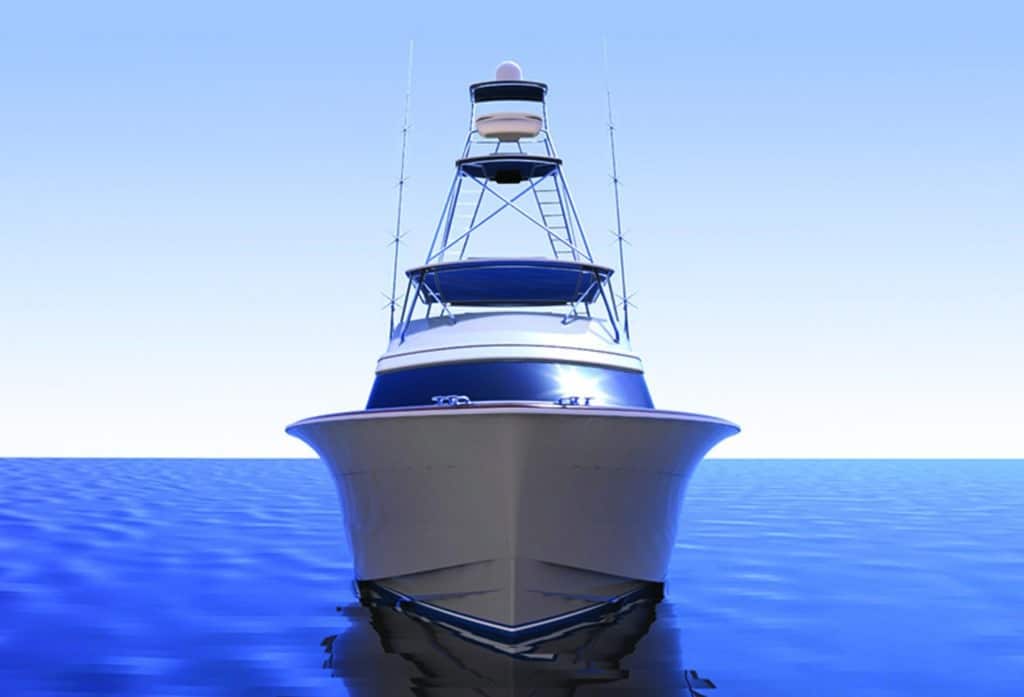
gt70_bowon (1).jpg
Where the builder has found areas to improve upon it has done just that, but the basic elements that have made the GT series well received by offshore enthusiasts will remain the same on the GT70: The noticeable bow flare, significant beam, sweeping sheer line and eye-catching tumblehome are all intact.
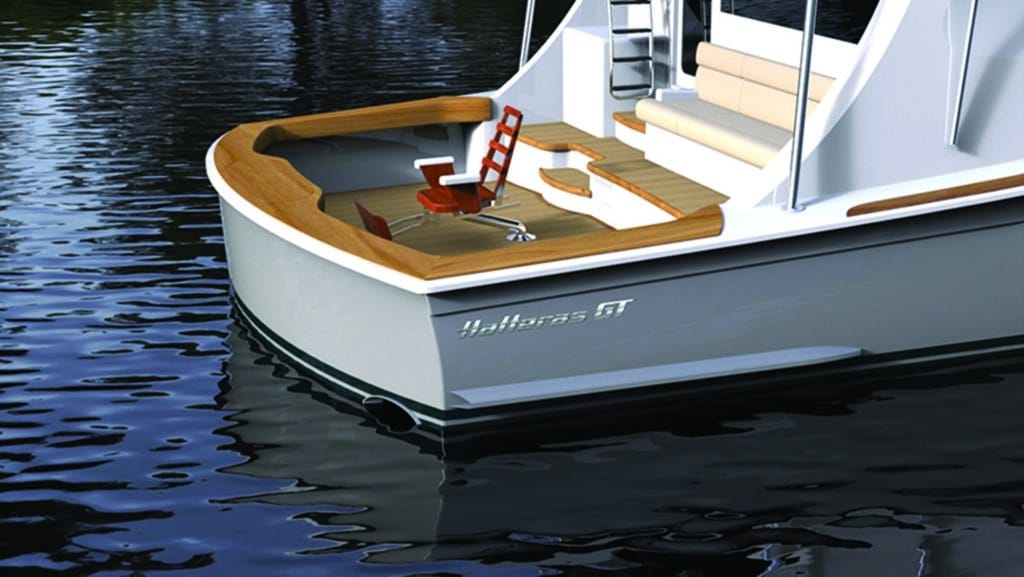
gt70_profile_std.jpg
Can’t you just see her backing down on a big blue marlin? The water pouring down her sides as her teak-covered cockpit glistens with seawater sloshing around. Next, you get a quick leader touch and a release. The fish swims off and you sit back under the shaded mezzanine and return to the business of bait-watching. You’re on the GT70 and she’s doing what she was made to do. I know I can, and it’s awesome.
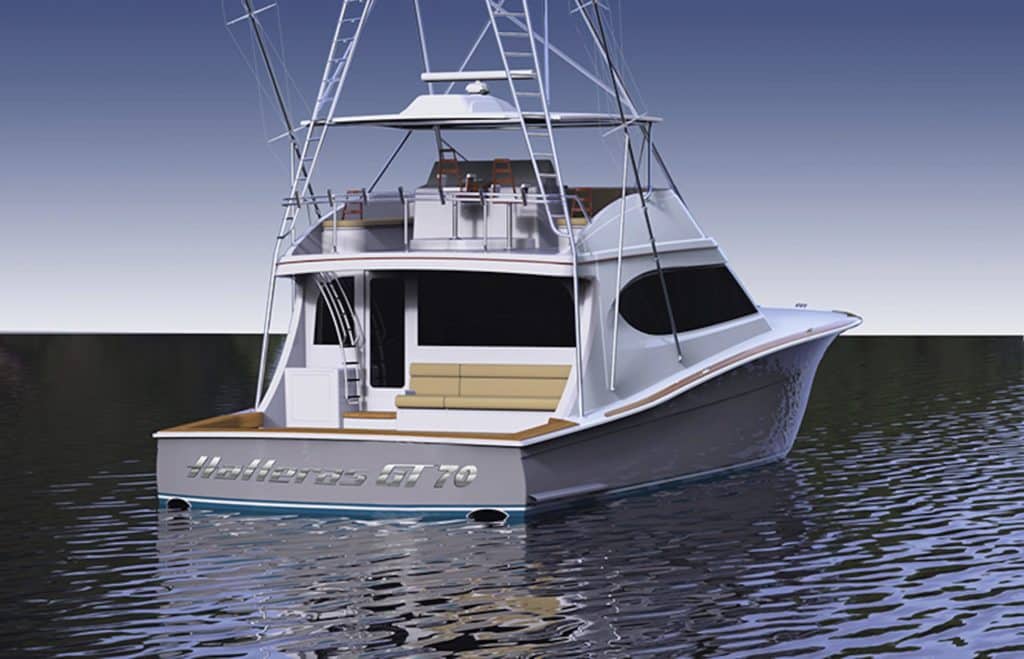
gt70_poster2a.jpg
